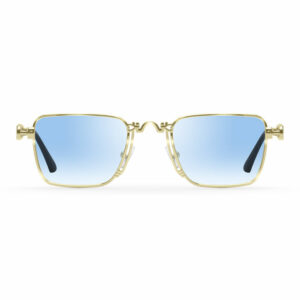Introduction:
Sunglasses serve as a practical accessory for shielding our eyes from the sun’s glare, but they also play a fascinating role in the realm of psychology. Beyond their functional purpose, sunglasses have the power to influence our perception of others and even impact our own sense of self. In this blog post, we delve into the intriguing psychology behind sunglasses, exploring how they shape our interactions, judgments, and self-perception.
-
Sunglasses – the Veil of Anonymity:
Wearing sunglasses can create a sense of anonymity by concealing a significant portion of our facial expressions and eye contact. This perceived anonymity can lead individuals to feel more confident, liberated, and less inhibited, allowing them to act in ways they may not typically do without the shield of sunglasses. Consequently, sunglasses can empower people to take on different personas or engage in behavior they might otherwise shy away from.
-
Sunglasses – Attribution Errors:
Sunglasses obstruct visual cues that contribute to accurate perception, such as eye contact and facial expressions. This deficiency in information can lead to attribution errors, where we may misinterpret or project personality traits onto individuals wearing sunglasses. For instance, you might see an indoor sunglasses wearer as aloof or unapproachable. However, their actual behavior may not match this assumption. This discrepancy is an attribution error. It underscores how limited visual cues from sunglasses can distort our judgment of others.
-
Nonverbal Communication:
Our eyes play a crucial role in nonverbal communication, conveying emotions, intentions, and social cues. By concealing our eyes behind sunglasses, we disrupt this natural form of communication. This absence of eye contact can impact social interactions, making it challenging for others to gauge our sincerity, interest, or engagement. Conversely, wearing sunglasses can also provide a shield, allowing individuals to hide their true emotions and intentions, making it harder for others to accurately read their nonverbal cues.
-
Perception of Confidence:
Sunglasses have long been associated with confidence and a certain level of coolness. When we see someone wearing sunglasses, we tend to perceive them as more self-assured and mysterious. This perception of confidence can extend to the wearer themselves, as they may experience a boost in self-esteem when donning sunglasses. Sunglasses, providing a sense of shielding, can instill empowerment and cast a favorable impression on the wearer and their observers.
-
Sunglasses – Fashion and Identity:
Beyond their psychological impact, sunglasses also serve as a fashion accessory and a means of self-expression. The type, style, and brand of sunglasses we choose can reflect our personal taste, lifestyle, and even social status. The act of selecting and wearing sunglasses can become a form of identity signaling, allowing individuals to communicate their preferences, personality, and belonging to specific groups or subcultures.
Conclusion:
The psychology of sunglasses reveals a complex interplay between perception, identity, and social dynamics. By obscuring our eyes and facial expressions, sunglasses can create a veil of anonymity, alter how we perceive others, and affect how we are perceived. By grasping the psychological implications of sunglasses, we can better navigate social interactions. Moreover, this heightened awareness helps us realize the significant influence this seemingly simple accessory exerts on our behavior and self-perception.





